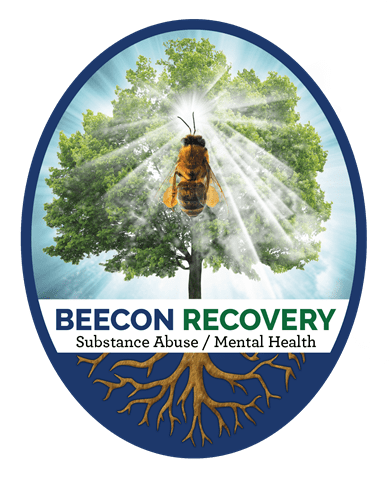Understanding Treatment Assessments
Importance of Treatment Assessments
At Beecon Recovery, we understand that the foundation of effective addiction recovery and mental health treatment lies in comprehensive treatment assessments. These assessments are crucial as they provide a detailed understanding of an individual’s unique needs, helping us to tailor a personalized treatment plan. By evaluating various aspects of a person’s health and history, we can ensure that the treatment journey is both effective and supportive.
Components of a Treatment Assessment
A thorough treatment assessment typically involves several key components. Each component plays a vital role in creating a holistic view of the individual’s condition and needs.
-
History of Substance Use: This involves gathering detailed information about the individual’s drug and alcohol use history. Understanding the patterns and extent of substance use helps in identifying the severity of the addiction and planning appropriate interventions. For more details, visit our section on how clinical assessments determine your level of care.
-
Physical Exams: Physical exams are conducted to assess the individual’s overall health and identify any withdrawal symptoms. These exams usually last about one hour (High Focus Centers). The findings from these exams are crucial for managing any immediate health concerns and planning detoxification if necessary.
-
Psychiatric Evaluations: These evaluations are essential for understanding the individual’s mental health status. They typically last approximately two hours and involve assessing the person’s emotional state, cognitive abilities, and interactions with others. Observations about mood, behavior, and the ability to express emotions and thoughts are noted.
-
Adolescent Assessments: For adolescents, the assessment process involves interviews with both the teen and their parents. This helps in understanding the child’s substance abuse problems, psychiatric symptoms, behavioral issues, and medical history (High Focus Centers). Parents must attend certain parts of the assessment, while other parts are conducted with the teen alone.
-
Diagnosis and Treatment Planning: Based on the gathered information, a diagnosis is made (when appropriate), and a structured treatment plan is developed. This plan is tailored to the individual’s specific needs and aims to help them heal, grow, and thrive.
-
Client Involvement: Involving clients in the assessment and treatment planning process is essential for better cultural understanding and responsiveness. Co-constructing the client’s story with them honors their cultural experiences, points of trauma, and resilience.
| Component | Duration |
|---|---|
| Physical Exams | 1 hour |
| Psychiatric Evaluations | 2 hours |
| Adolescent Assessments | Varies |
Understanding what to expect during each phase of your treatment journey is crucial for a successful recovery. For more information on the different levels of care and how they support long-term recovery, visit our articles on what is the difference between php iop and opt in addiction treatment and how general outpatient (opt) supports long-term recovery.
Substance Abuse Assessment
At Beecon Recovery, we understand the importance of a thorough substance abuse assessment as the first step in your treatment journey. This phase helps us gather essential information to create a personalized treatment plan tailored to your specific needs.
History of Drug and Alcohol Use
During the substance abuse assessment, we take a comprehensive history of your drug and alcohol use. This includes detailed questions about the types of substances used, the frequency and duration of use, and any previous attempts at quitting. We also administer a drug and alcohol screen to determine what substances are currently present in your system.
| Assessment Component | Details |
|---|---|
| Types of Substances | Identifies all substances used (e.g., alcohol, opioids, stimulants) |
| Frequency of Use | How often substances are used (daily, weekly, etc.) |
| Duration of Use | Length of time substances have been used |
| Previous Treatment Attempts | Any prior efforts to quit or reduce use |
| Drug and Alcohol Screen | Tests for substances currently in the system |
Understanding your history of substance use is crucial for determining the most effective treatment approach. This information helps us identify patterns and triggers, allowing us to develop strategies to address them.
Physical Exams and Withdrawal Symptoms
Physical exams are a vital part of the substance abuse assessment. These exams help us identify any withdrawal symptoms you may be experiencing and assess your overall health. We conduct tests for TB, HIV/AIDS, and other infectious diseases, along with blood count, electrolyte levels, and examination of major organ functions.
| Exam Component | Purpose |
|---|---|
| Physical Exam | Identifies withdrawal symptoms and overall health status |
| TB Test | Screens for tuberculosis |
| HIV/AIDS Test | Screens for HIV/AIDS |
| Blood Count | Assesses overall health and detects abnormalities |
| Electrolyte Levels | Checks for imbalances that could affect health |
| Organ Function Tests | Evaluates the health of major organs (e.g., liver, kidneys) |
Identifying withdrawal symptoms early allows us to provide the necessary medical support to manage them safely. This is especially important for substances that can cause severe withdrawal symptoms, such as alcohol and opioids.
For more information on how clinical assessments determine your level of care, visit our article on how clinical assessments determine your level of care.
By thoroughly assessing your history of drug and alcohol use and conducting comprehensive physical exams, we can create a treatment plan that addresses your unique needs. This personalized approach ensures that you receive the best possible care throughout your recovery journey. For additional support and resources, explore our articles on what is the difference between php iop and opt in addiction treatment and when is a partial hospitalization program (php) the right choice?.
Mental Health Assessment
Emotional State Evaluation
During the mental health assessment phase of your treatment journey, we focus on evaluating your emotional state. This evaluation is crucial as it helps us understand your current mental health status and how it affects your daily life. We assess various aspects of your emotional well-being, including your mood, behavior, and ability to express emotions and thoughts.
Our team of professionals will engage in conversations with you to gauge your emotional responses and interactions. This process involves asking questions about your feelings, thoughts, and experiences. We aim to create a safe and supportive environment where you can openly share your emotions.
Observations and Notations
In addition to evaluating your emotional state, we make detailed observations and notations about your overall mental health. These observations include your ability to think, reason, remember, and interact with others. By carefully noting these aspects, we can develop a comprehensive understanding of your mental health needs.
Our observations are documented meticulously to ensure that we have a clear record of your progress and any changes in your mental health over time. This information is vital for creating an effective treatment plan tailored to your specific needs. We believe in involving you in the treatment planning process, as it allows for better cultural understanding and responsiveness.
| Assessment Component | Description |
|---|---|
| Mood | Observations about your general emotional state |
| Behavior | Notations on your actions and interactions |
| Thought Process | Evaluation of your ability to think and reason |
| Memory | Assessment of your ability to remember information |
| Social Interaction | Observations on how you interact with others |
Understanding what to expect during each phase of your treatment journey is essential for your mental and emotional preparation. Clear communication and transparency from our healthcare providers foster trust and enhance your overall treatment satisfaction. For more information on how clinical assessments determine your level of care, visit our article on how clinical assessments determine your level of care.
By thoroughly evaluating your emotional state and making detailed observations, we can ensure that your treatment plan is tailored to your unique needs. This approach helps us provide the best possible care and support throughout your recovery journey. For additional tips on maintaining progress between outpatient sessions, check out our article on how to maintain progress between outpatient sessions.
Adolescent Assessments
Involvement of Parents
At Beecon Recovery, we understand the critical role parents play in the treatment journey of adolescents. During the adolescent assessment phase, parents are actively involved to provide comprehensive insights into their child’s history and current state. This involvement is essential for creating an effective treatment plan tailored to the adolescent’s needs.
Parents are required to attend the assessment sessions, which typically last about 90 minutes (High Focus Centers). During these sessions, parents will be interviewed about their child’s substance abuse problems, psychiatric symptoms, behavioral issues, and medical history. This information helps our team to understand the full scope of the adolescent’s challenges and to develop a holistic treatment approach.
Teen Assessment Process
The teen assessment process at Beecon Recovery is designed to be thorough and supportive. It involves several key components to ensure that we gather all necessary information to create an effective treatment plan.
- Initial Interviews: The assessment begins with interviews involving both the adolescent and their parents. This helps us to gather a comprehensive understanding of the adolescent’s background and current issues.
- Physical Exams: A physical examination is conducted to assess the adolescent’s overall health and to identify any physical symptoms related to substance abuse or mental health conditions. This exam typically lasts about one hour.
- Psychiatric Evaluations: A psychiatric evaluation is performed to understand the adolescent’s emotional and mental state. This evaluation lasts approximately two hours and includes observations and notations about the adolescent’s behavior and emotional responses (High Focus Centers).
- Private Sessions: Some parts of the assessment are conducted without the parents present. This allows the adolescent to speak freely about their experiences and feelings, providing our team with a clearer picture of their mental health and substance use.
- Collaborative Planning: After the assessment, our team collaborates with the adolescent and their parents to discuss the findings and to develop a personalized treatment plan. This plan includes recommendations for the appropriate level of care, which may involve partial hospitalization programs (PHP), intensive outpatient programs (IOP), or general outpatient treatment (OPT).
By involving parents and conducting a thorough assessment, we ensure that the treatment plan addresses all aspects of the adolescent’s well-being. For more information on how clinical assessments determine the level of care, visit our article on how clinical assessments determine your level of care.
Treatment Duration Expectations
Understanding the duration of treatment is a critical aspect of the recovery journey. At Beecon Recovery, we emphasize the importance of setting realistic expectations and maintaining open communication throughout the process.
Importance of Knowing Treatment Duration
Knowing the estimated duration of a treatment regimen is crucial for patients, healthcare providers, and caregivers. It helps everyone involved to prepare mentally and emotionally for the journey ahead, fostering a sense of empowerment and control over health outcomes (Destinations for Teens).
Medical treatments can vary significantly in duration depending on the nature of the condition, treatment modality, and patient response. For instance, studies indicate that on average, 50% of patients recover after 15 to 20 therapy sessions, with noticeable clinically significant improvements often seen after attending 12-16 weekly sessions. More complete symptom relief typically occurs within 20-30 sessions over six months. Long-term therapy lasting 12-18 months may be beneficial for those dealing with complex issues, trauma, or multiple concerns.
| Treatment Type | Average Duration | Sessions per Week |
|---|---|---|
| Short-term Therapy | 12-16 weeks | 1 |
| Medium-term Therapy | 20-30 weeks | 1 |
| Long-term Therapy | 12-18 months | 1 |
Setting realistic expectations upfront for the treatment duration is essential to better prepare individuals for the treatment journey, stay motivated, and actively participate in their healing process. Trusting the expertise of healthcare providers and adhering to the recommended treatment plan are crucial to achieve optimal outcomes within the estimated timeframe (Destinations for Teens).
Communication and Transparency
Clear communication from healthcare providers regarding the expected duration of treatment promotes transparency and trust in the therapeutic process. This enhances patient-provider relationships and overall treatment satisfaction.
At Beecon Recovery, we prioritize open communication and transparency. We ensure that our patients are well-informed about their treatment plans, including the expected duration and what to expect during each phase of their journey. This approach helps to build trust and encourages patients to engage actively in their recovery process.
We also understand the importance of adapting treatment plans based on individual progress and needs. Regular assessments and feedback sessions are conducted to ensure that the treatment remains effective and aligned with the patient’s goals. For more information on how clinical assessments determine your level of care, visit our article on how clinical assessments determine your level of care.
By maintaining open lines of communication and setting clear expectations, we aim to provide a supportive and transparent environment for our patients. This approach not only enhances the treatment experience but also contributes to better outcomes and long-term recovery success. For more insights on transitioning between different levels of care, check out our articles on transitioning from inpatient to outpatient: what you need to know and using case management to navigate multiple levels of care.
Managing Chemotherapy Side Effects
Chemotherapy is a common treatment for cancer, but it can come with a range of side effects. Understanding these side effects and how to manage them is crucial for anyone undergoing treatment.
Common Side Effects
Chemotherapy drugs can affect various parts of the body, leading to a variety of side effects. Some of the most common side effects include:
- Nausea and vomiting
- Hair loss
- Fatigue
- Anemia
- Increased risk of infection
- Easy bruising or bleeding
- Constipation
- Diarrhea
- Mouth and throat sores
- Neuropathy (nerve damage)
These side effects occur because chemotherapy targets rapidly dividing cells, which include not only cancer cells but also healthy cells in the hair follicles, digestive tract, and bone marrow (American Cancer Society).
Duration and Management
The duration of chemotherapy side effects can vary widely. Some side effects may resolve quickly after treatment ends, while others can persist for months or even years. In some cases, late effects and delayed effects, such as a second cancer, may appear many years later (American Cancer Society).
| Side Effect | Duration | Management |
|---|---|---|
| Nausea and Vomiting | Days to weeks | Anti-nausea medications, dietary changes |
| Hair Loss | Temporary | Wigs, scarves, gentle hair care |
| Fatigue | Weeks to months | Rest, light exercise, balanced diet |
| Anemia | Weeks to months | Iron supplements, blood transfusions |
| Infection Risk | Varies | Antibiotics, hygiene practices |
| Bruising/Bleeding | Varies | Avoiding injuries, using soft toothbrushes |
| Constipation | Days to weeks | Laxatives, high-fiber diet |
| Diarrhea | Days to weeks | Anti-diarrheal medications, hydration |
| Mouth/Throat Sores | Days to weeks | Mouth rinses, soft foods |
| Neuropathy | Months to years | Pain medications, physical therapy |
Managing these side effects often involves a combination of medications, lifestyle changes, and supportive care. For example, anti-nausea medications can help control nausea and vomiting, while wigs and scarves can help manage hair loss. It’s also important to maintain open communication with your healthcare team to address any side effects promptly and effectively.
Doctors must also consider interactions between chemotherapy drugs and other medications, including over-the-counter drugs, vitamins, and supplements. These interactions can worsen side effects and impact the effectiveness of the chemotherapy drugs. Always discuss the safety of using other medicines, vitamins, and supplements with your doctor during cancer treatment.
For more information on managing treatment side effects and understanding the different phases of your treatment journey, visit our articles on what is the difference between php iop and opt in addiction treatment and how clinical assessments determine your level of care.
Milestones in Clinical Trials
Significance of Project Milestones
Milestones in clinical trials are key checkpoints or events that mark significant stages in the progression of a clinical trial. These milestones are established based on the trial protocol, regulatory requirements, and industry best practices. They help ensure that the trial stays on track towards demonstrating the safety and efficacy of the investigational product.
Milestones are essential for guiding researchers and sponsors through the complex process of drug development. They enhance trial efficiency, maintain regulatory compliance, and ultimately bring safe and effective treatments to patients in need. Specific documents are expected to be generated and submitted at each milestone. These documents play a crucial role in documenting the conduct of the trial, ensuring data integrity, and supporting regulatory submissions.
| Milestone | Description | Importance |
|---|---|---|
| Protocol Approval | Finalization and approval of the trial protocol | Ensures the trial is designed to meet regulatory and scientific standards |
| First Patient In (FPI) | Enrollment of the first participant | Marks the beginning of the trial’s execution phase |
| Interim Analysis | Preliminary analysis of collected data | Allows for early assessment of safety and efficacy |
| Last Patient Last Visit (LPLV) | Completion of the final participant’s last visit | Indicates the end of data collection |
| Database Lock | Finalization of the trial database | Ensures data integrity before analysis |
| Final Report Submission | Submission of the trial’s final report to regulatory authorities | Essential for regulatory review and approval |
Milestone Management Importance
Effective milestone management is crucial for successful clinical trials. It is not just a regulatory requirement but a cornerstone of ethical and responsible clinical research. Proper management ensures that each phase of the trial is completed on time and within budget, while maintaining the highest standards of data integrity and participant safety (LinkedIn).
Milestone management involves tracking progress, identifying potential issues early, and implementing corrective actions as needed. This proactive approach helps to avoid delays and ensures that the trial remains compliant with regulatory requirements. Tools like CLIN STREET’s eTMF platform offer features designed to ensure best-in-class milestone management and associated expected documents, simplifying clinical trial management and tailoring solutions to fit project requirements.
For those navigating the complexities of addiction recovery and mental health treatment, understanding the importance of milestones can provide clarity and reassurance. By knowing what to expect during each phase of your treatment journey, you can better prepare for the road ahead. For more information on how clinical assessments determine your level of care, visit our article on how clinical assessments determine your level of care.






